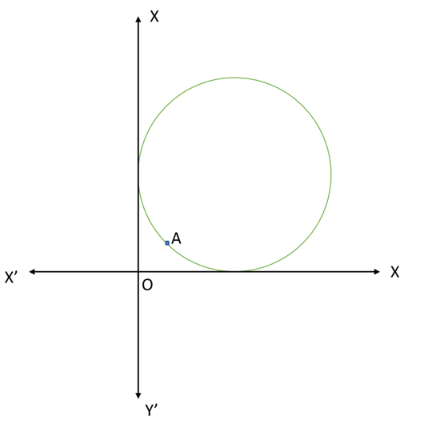Events & Promotions
|
|

GMAT Club Daily Prep
Thank you for using the timer - this advanced tool can estimate your performance and suggest more practice questions. We have subscribed you to Daily Prep Questions via email.
Customized
for You
Track
Your Progress
Practice
Pays
Not interested in getting valuable practice questions and articles delivered to your email? No problem, unsubscribe here.
- Nov 19
12:30 PM EST
-01:30 PM EST
Learn how Keshav, a Chartered Accountant, scored an impressive 705 on GMAT in just 30 days with GMATWhiz's expert guidance. In this video, he shares preparation tips and strategies that worked for him, including the mock, time management, and more - Nov 20
01:30 PM EST
-02:30 PM IST
Learn how Kamakshi achieved a GMAT 675 with an impressive 96th %ile in Data Insights. Discover the unique methods and exam strategies that helped her excel in DI along with other sections for a balanced and high score. - Nov 22
11:00 AM IST
-01:00 PM IST
Do RC/MSR passages scare you? e-GMAT is conducting a masterclass to help you learn – Learn effective reading strategies Tackle difficult RC & MSR with confidence Excel in timed test environment - Nov 23
11:00 AM IST
-01:00 PM IST
Attend this free GMAT Algebra Webinar and learn how to master the most challenging Inequalities and Absolute Value problems with ease. - Nov 24
07:00 PM PST
-08:00 PM PST
Full-length FE mock with insightful analytics, weakness diagnosis, and video explanations! - Nov 25
10:00 AM EST
-11:00 AM EST
Prefer video-based learning? The Target Test Prep OnDemand course is a one-of-a-kind video masterclass featuring 400 hours of lecture-style teaching by Scott Woodbury-Stewart, founder of Target Test Prep and one of the most accomplished GMAT instructors.
Kudos
Bookmarks
A
Be sure to select an answer first to save it in the Error Log before revealing the correct answer (OA)!
Difficulty:
 95%
(hard)
95%
(hard)
Question Stats:
27% (01:38) correct 73%
(02:17)
wrong
73%
(02:17)
wrong  based on 118
sessions
based on 118
sessions
History
Date
Time
Result
Not Attempted Yet
12 Days of Christmas GMAT Competition with Lots of Fun

In the given figure both the co-ordinate axes are tangent to the drawn circle. If A is a point on the circumference of the circle as shown, then what is the radius of the circle?
(1) The co-ordinate of A is (4, 8).
(2) The radius is greater than 15.

2022-12-12_18-00-51.png [ 12.54 KiB | Viewed 3249 times ]
In the given figure both the co-ordinate axes are tangent to the drawn circle. If A is a point on the circumference of the circle as shown, then what is the radius of the circle?
(1) The co-ordinate of A is (4, 8).
(2) The radius is greater than 15.
|
Attachment:
2022-12-12_18-00-51.png [ 12.54 KiB | Viewed 3249 times ]
Kudos
Bookmarks
Bunuel
GMATWhiz Official Explanation:
Step 1: Analyse Question Stem:
- • We are given the figure.
- o The co-ordinate axes are tangent to the drawn circle.
o If A is a point on the circumference of the circle as shown.
- o Let the radius = r.
Step 2: Analyse Statements Independently (And eliminate options) – AD/BCE
Statement 1: The co-ordinate of A is (4, 8).
- • The co-ordinate of A is (4,8)
• We can say that OA is the radius and thus it should be = r.
- o Thus, distance between O and A = \(\sqrt{(r-8)^2+(r-4)^2} = r\)
\(\sqrt{(r-8)^2+(r-4)^2} = r\)
Or, \((r-8)^2+(r-4)^2 = r^2\) (Squaring each side)
Or, \(r^2-16r+64+ r^2-8r+16 = r^2\)
Or, \(r^2-24r+80 = 0\)
Or, \((r – 20) (r – 4) = 0\)
Or, r = 20 or 4.
• However, we know the point A has a co-ordinate of (4, 8).
- o And as per the figure r must be greater than both 4 and 8.
o Thus, only possible value is 20.
Statement 2: The radius is greater than 15.
- • We can see that there are infinite possibilities for radius from this info.
The answer is option A.
Attachment:
2022-12-20_16-11-02.png [ 27.04 KiB | Viewed 2508 times ]
General Discussion
Kudos
Bookmarks
In the given figure both the co-ordinate axes are tangent to the drawn circle. If A is a point on the circumference of the circle as shown, then what is the radius of the cube?
Let the radius of the circle is r.
The equation of the circle with centre (r, r) and radius r:
(x-r)^2 + (y-r)^2 = r^2
Quote:
Since A(4,8) is on the circumference of the circle, it should satisfy equation of the circle.
(4-r)^2 + (8-r)^2 = r^2
r^2 - 8r + 16 + 64 - 16r + r^2 = r^2
r^2 - 24r + 80 = 0
(r-20)(r-4) = 0
From the figure it is clear that both 4 & 8 are less than r
r = 20
SUFFICIENT
Quote:
No information is provided to calculate r.
NOT SUFFICIENT
IMO A


















